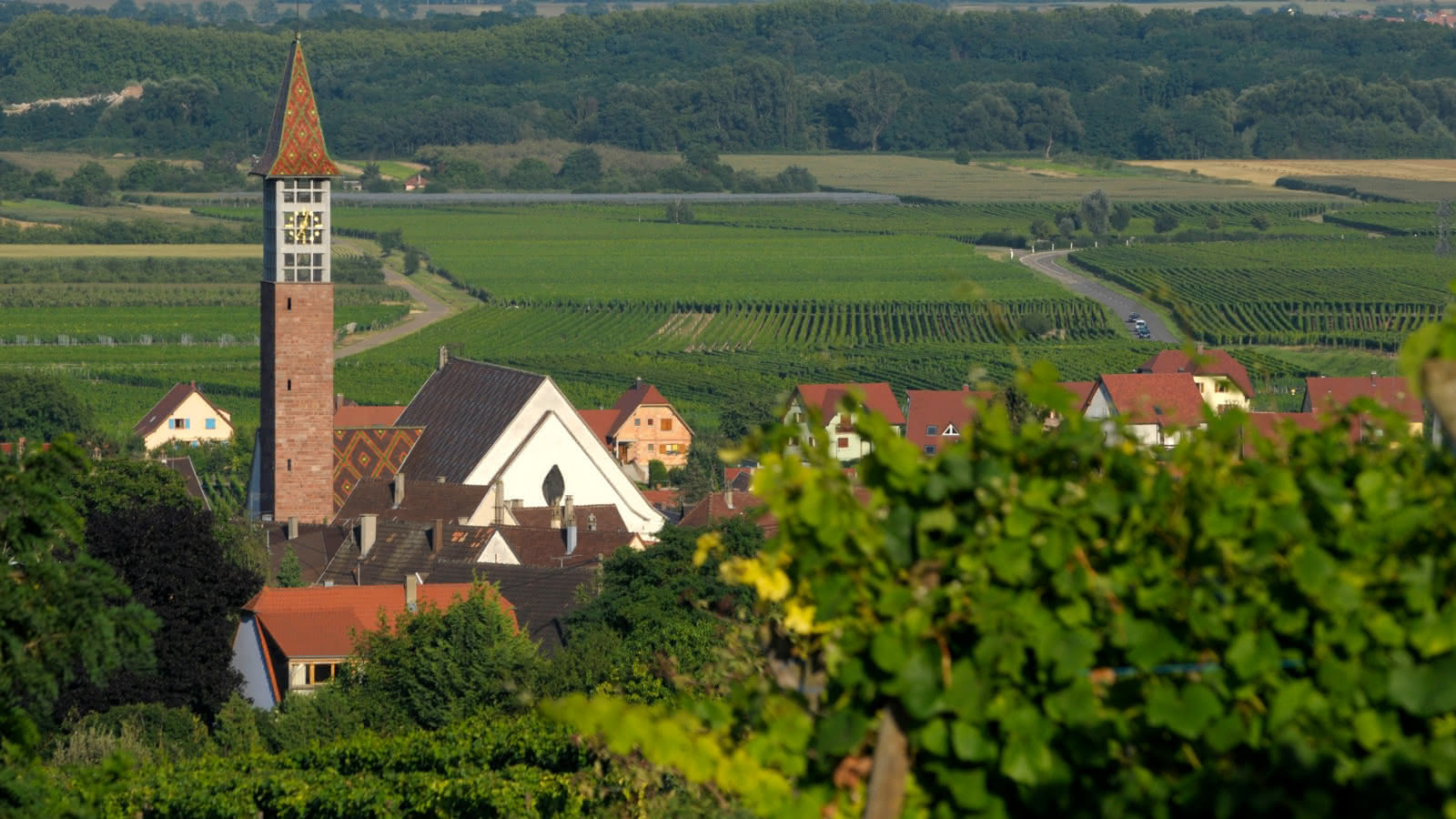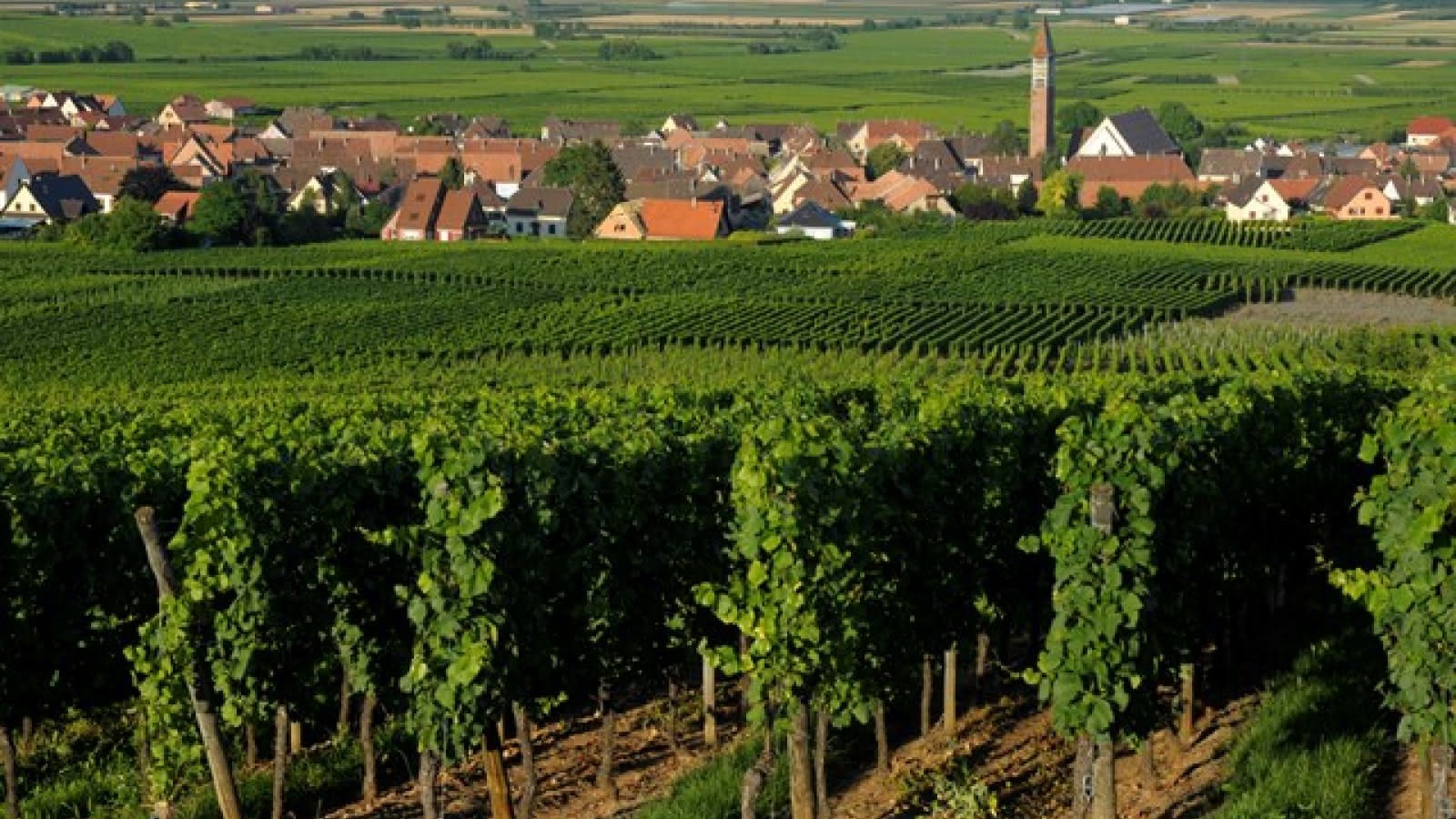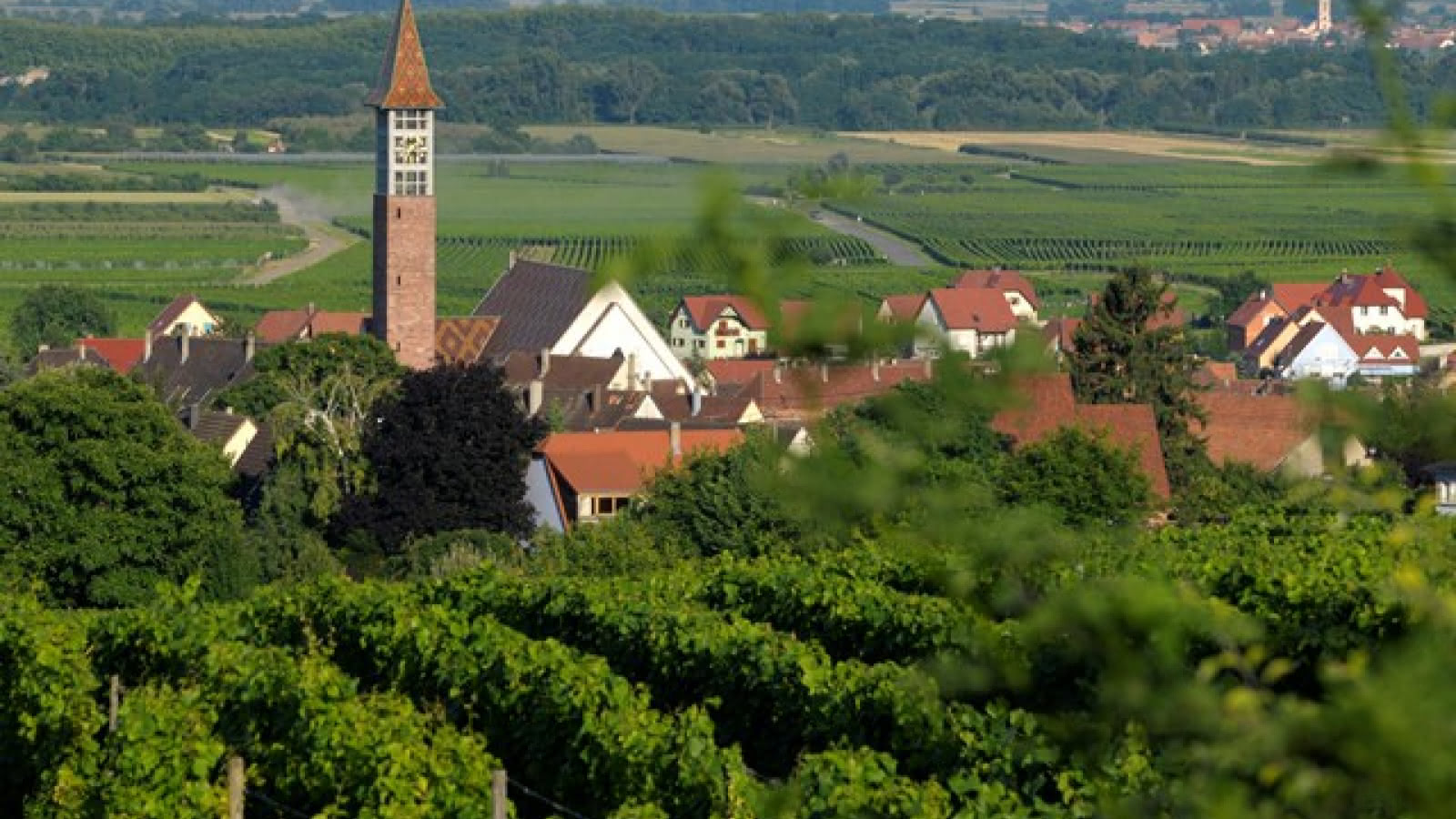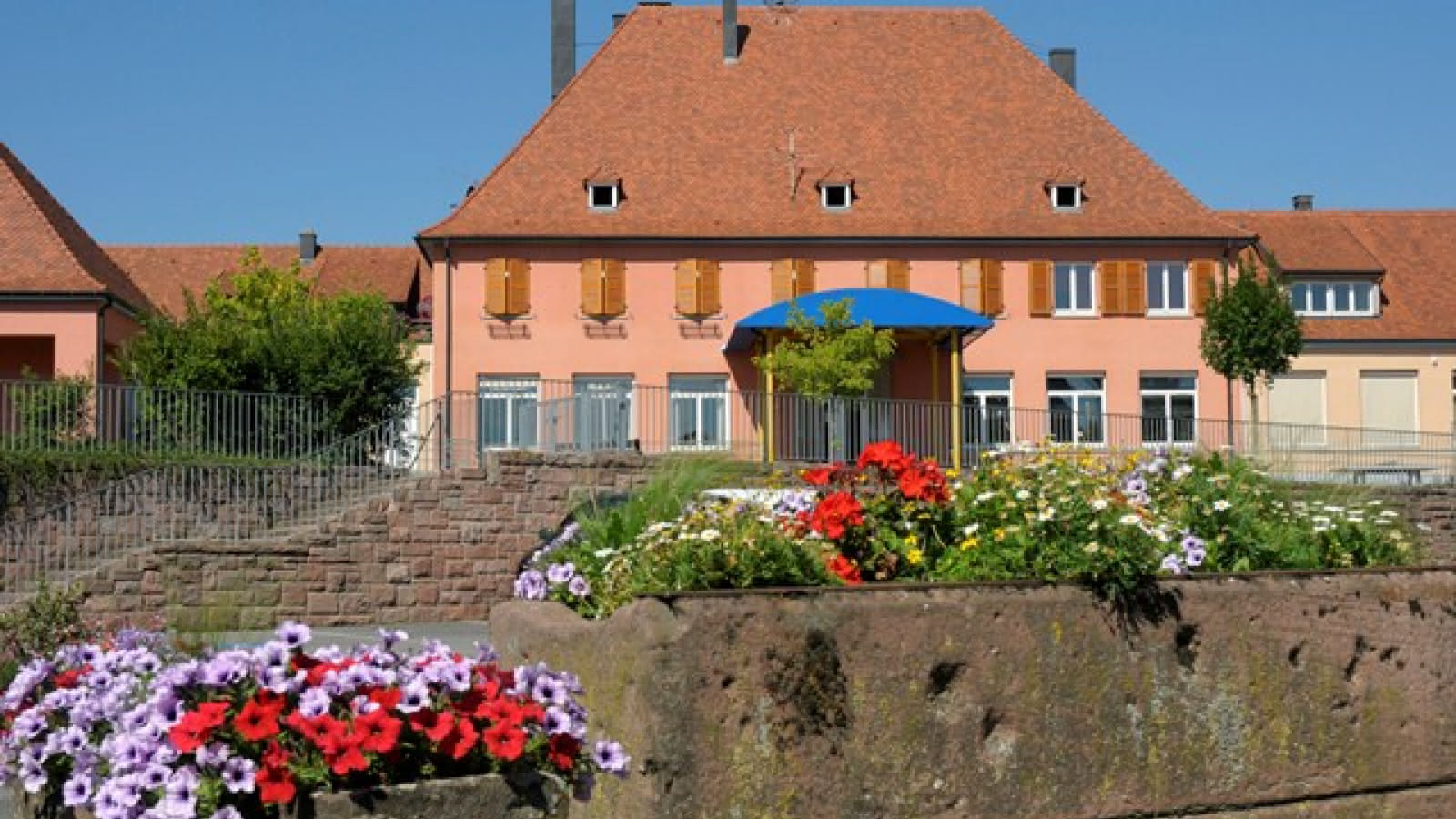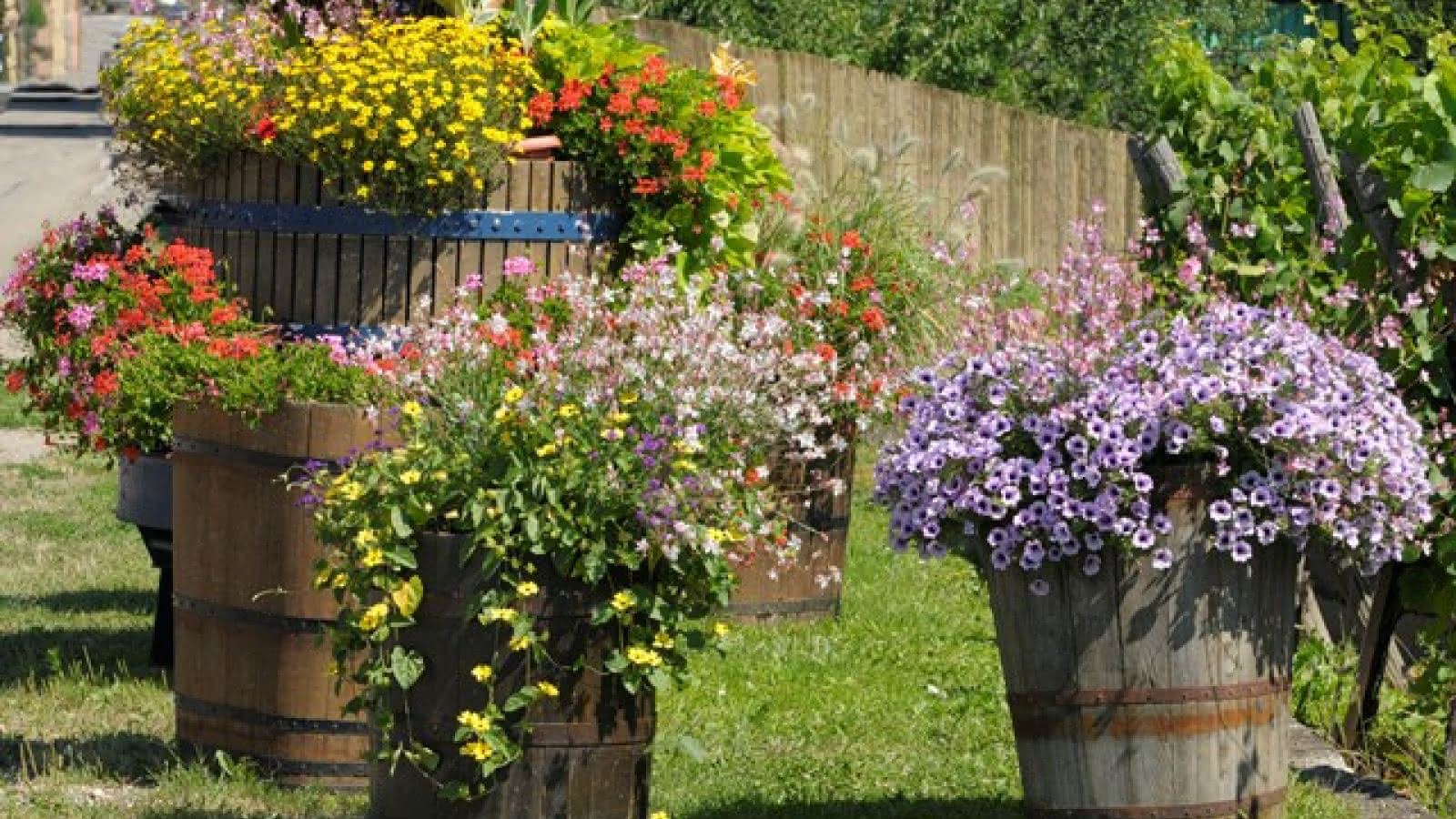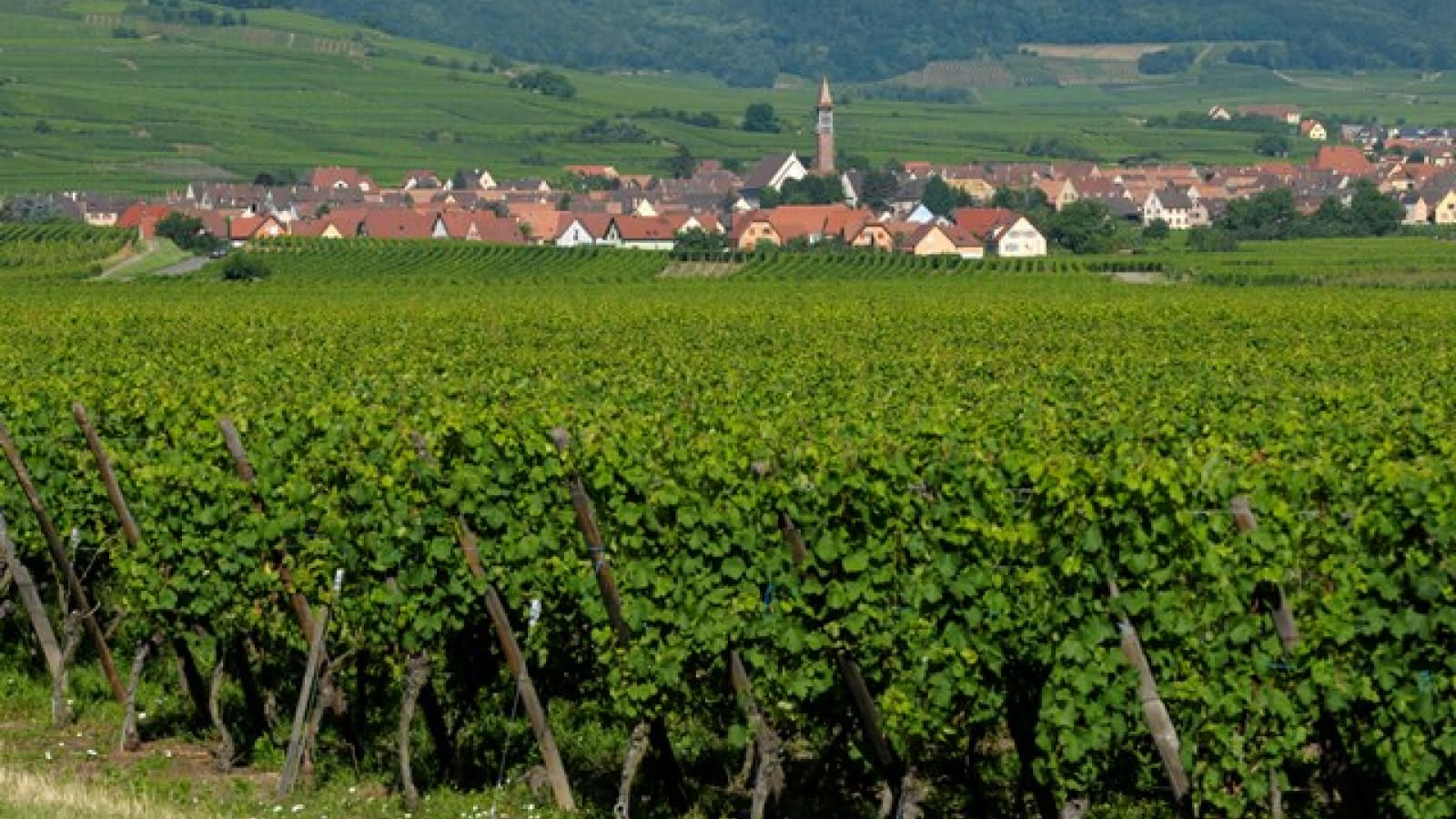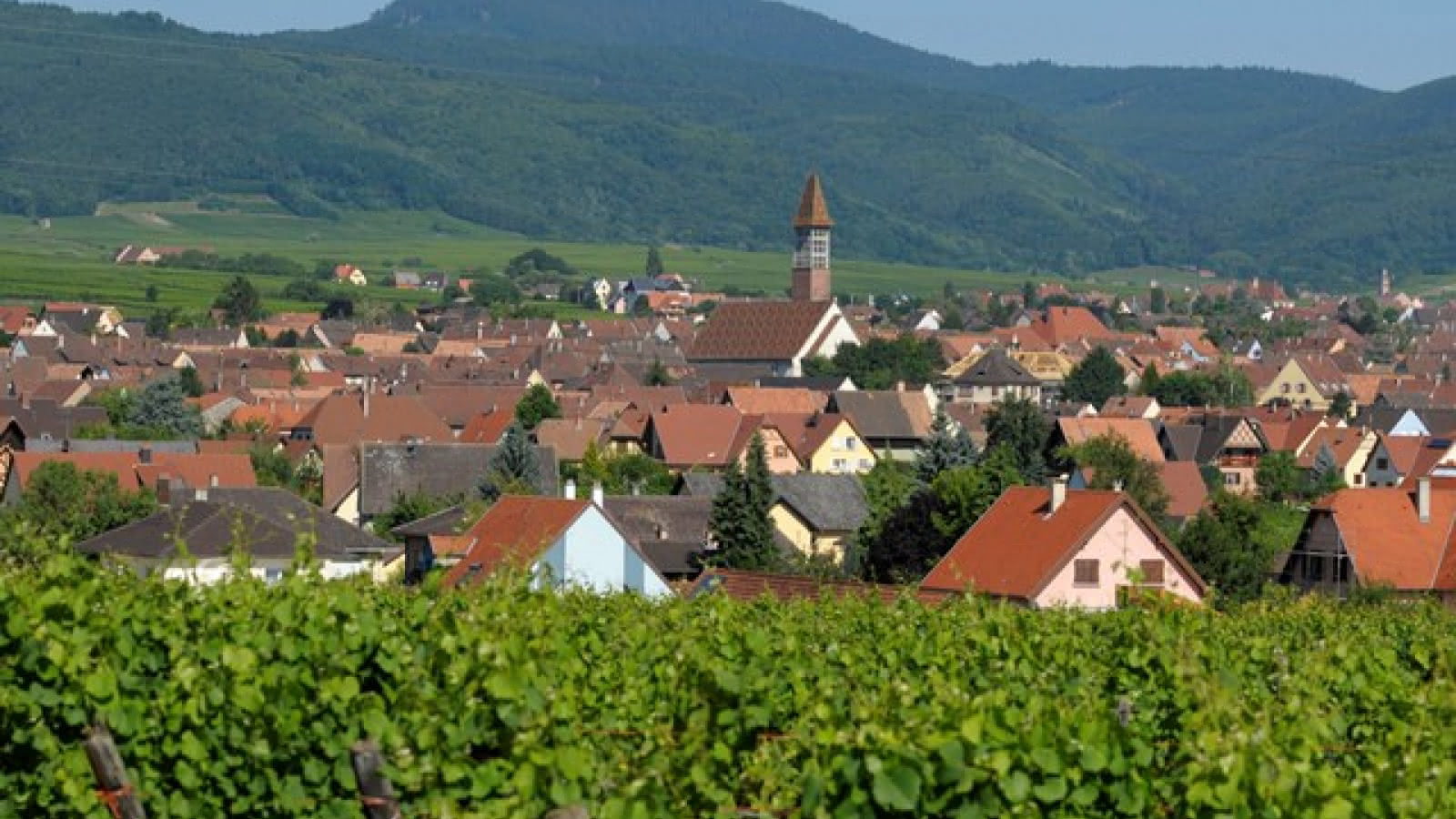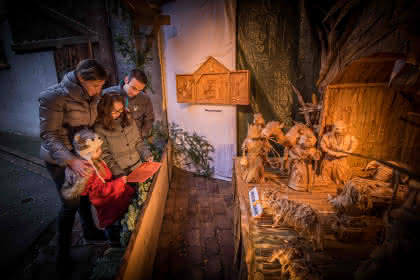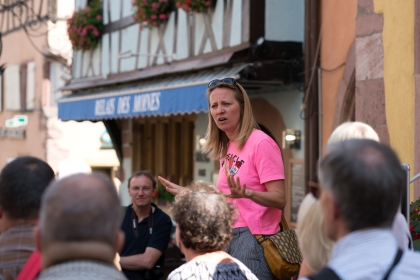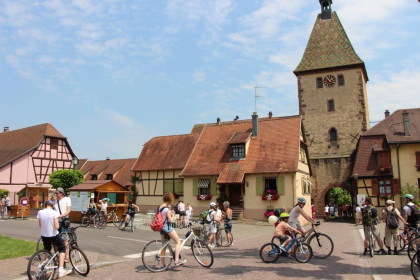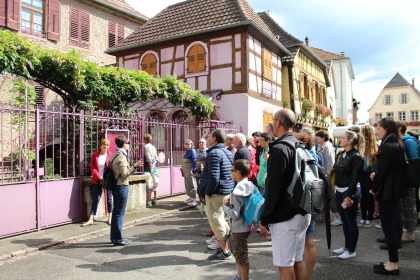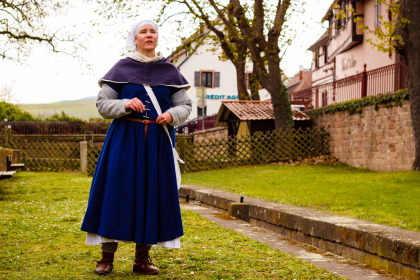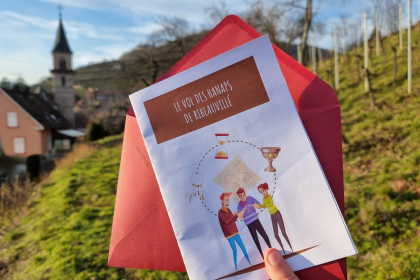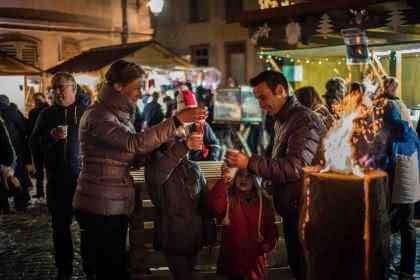Discovery circuit of Bennwihr
- 1h
- km
- Easy
Crossed by the Alsace Wine Route whose layout was consolidated after World War II following on from the reconstruction of the village, Bennwihr is an urban fabric constructed in a uniform traditional style based on plans drawn up by the reconstruction architect (Gustave Stoskopf); thus, vineyard owner homes have retained the traditional enclosed courtyard structure. Bennwihr enjoys a mild climate that is particularly appropriate for growing vines and fruit trees (the vineyard surrounding the village covers half of the village’s farm lands). Men have inhabited the Bennwihr site since the Stone Age because of its fertile soil and its proximity to rivers (the Fecht and the Weiss). In Roman times, an individual called ”Bebo” is said to have established his domain there, on the fringes of the old Celtic route (travelled by the Roman legions) which is now the Alsace Wine Route. In 777, Bennwihr is mentioned under the name of ”Bebonovillare” in a gift made by Abbot Fulrade (of the Benedictine monastery of Saint-Denis in Ile-de-France, of Alsace origin, who founded three convents in Alsace). In the 11th century, the village of Bennwihr which formed part of the Seigneurie of Riquewihr but was the property of the Bishop of Strasbourg, was given in fief to the counts of Horbourg. In about 1324, the counts of Horbourg who had no male descendants, sold their properties (including the Seigneurie of Riquewihr that had been granted to them as a fiefdom but did not belong to them) to count Ulrich of Wurttemberg, their cousin. In 1332, the Bishop of Strasbourg decided to attack the town of Riquewihr in order to recover the Seigneurie of Riquewihr that included, beyond the villages of Riquewihr and Bennwihr, six other villages. This attack caused Bennwihr and Zellenberg to be returned to the Bishop of Strasbourg by the Wurttemberg* family in exchange for a sum of money. Thus, Bennwihr and Zellenberg formed the Zellenberg bailiwick which was later given in fief to the Ribeaupierre (lords based in Ribeauvillé) who became its permanent owners in 1434 and handed it down to their heirs (the Dukes of Birkenfeld-Deux-Ponts). This family remained its owners until the French Revolution. In the Middle Ages, various religious establishments mention owning lands in Bennwihr. In the 19th century, the age of industrialisation, the construction of the first railway line through Alsace provided the inhabitants of Bennwihr with a new means of communication and ensured the economic growth of the village. The 1914-1918 war devastated the inhabitants of the village (24 died in battle and many were taken prisoners). In December 1944, Bennwihr was destroyed during the battles of the Colmar Pocket; all that remained standing was the monument in honour of the dead of the 1914-1918 war and four houses. A temporary village was erected in 1946 pending the rebuilding of Bennwihr which was completed in 1959.

